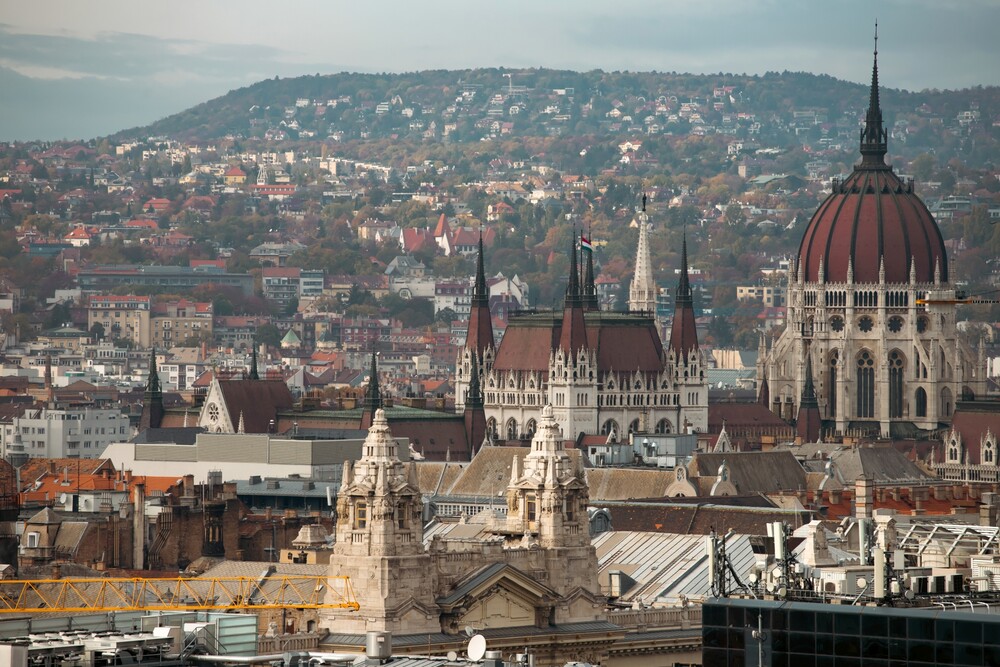1. The Parliament
This is perhaps the most iconic symbol of Budapest. The Hungarian Parliament is notable not only for its Neo-Gothic architecture but also for its size. It is one of the largest parliamentary buildings in the world.
Even today, Hungarian politics are shaped inside its walls. Moreover, the Parliament also serves as a repository for the coronation regalia, including the famous Crown of Saint Stephen.
2. Buda Castle
Another majestic jewel of Budapest is Buda Castle, which once served as the residence of Hungarian kings. Situated on a hill, the castle offers one of the best views of the Hungarian metropolis.
Within Buda Castle, you can visit the National Gallery and the Historical Museum. After the war, the castle underwent extensive reconstruction, as it was severely damaged during the fighting.
3. Chain Bridge
Although called the Chain Bridge, it is actually a suspension bridge. At the time of its construction, it was one of the largest bridges ever built. It includes not only pedestrian walkways but also a two-lane roadway.
This bridge was the first to connect Buda and Pest, which together form today's Budapest. However, the current bridge is not the original. The original was destroyed by the Germans during the war. It was completely rebuilt after the war, following the original plans.
4. St. Stephen's Basilica
Those who wish to visit the largest place of worship in Budapest should head to St. Stephen's Basilica. It was named after the first Hungarian king, who is among the most important figures in Hungarian history.
Among other things, the basilica is known for housing an interesting relic—a mummified hand of Saint Stephen. Like from Buda Castle, you can also admire the beauty of the entire city from this basilica.
5. Széchenyi Thermal Bath
Hungary is also known for its spas. Among the most famous is the Széchenyi Thermal Bath, located in Budapest's City Park. It is regularly visited not only by tourists but also by locals who love thermal baths.
The bath complex includes outdoor pools with warm water, which are used even during cold winter days. Visitors often play chess in these pools.
6. Hungarian State Opera House
The State Opera House is located in a Neo-Renaissance building, often referred to as one of the most beautiful in Europe. The Hungarian State Opera House prides itself not only on its visual qualities but also on its excellent acoustics.
The opera house was officially opened in 1884. It regularly hosts not only opera performances but also offers visitors ballet and other cultural events.

